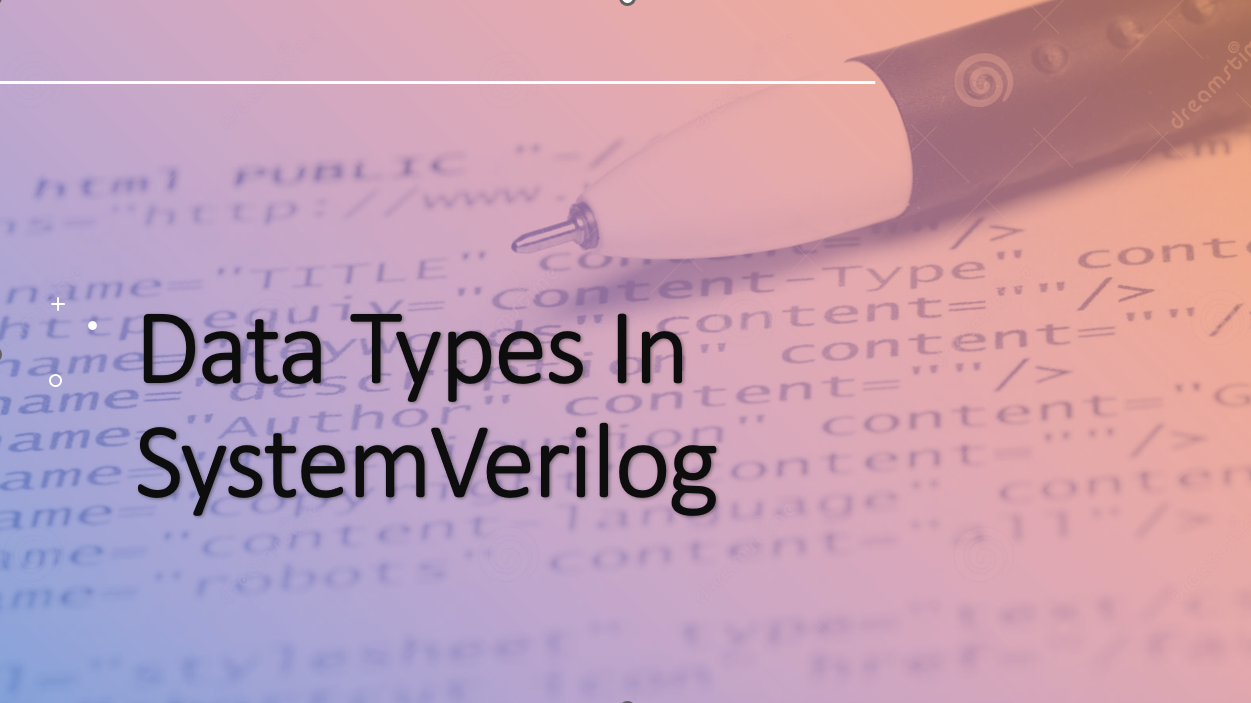Data Types In System Verilog
SystemVerilog provides several data types to facilitate
hardware design and verification. These data types can be classified into
several categories, including scalar types, composite types, and user-defined
types. Here's an overview of the main data types in SystemVerilog:
1. Scalar Types :-
- bit:
A single binary digit, representing '0' or '1'.
- logic:
A 4-state data type, representing '0', '1', 'x' (unknown), or 'z'
(high-impedance).
- byte:
An 8-bit scalar data type.
2. Integer Types :-
- int:
A signed 32-bit integer.
- shortint:
A signed 16-bit integer.
- longint:
A signed 64-bit integer.
- byte:
An unsigned 8-bit integer.
- shortint:
An unsigned 16-bit integer.
- longint:
An unsigned 64-bit integer.
3. Floating-Point Types :-
- real:
A 32-bit IEEE 754 single-precision floating-point number.
- realtime:
Similar to the real type, but can represent non-numeric values
like 'inf', 'nan', and 'qNaN'.
4. Enumerated Types :-
- enum:
A user-defined type used to create a set of named integer constants.
5. Array :-
- packed
array: An array of elements that are physically stored in memory
without gaps between them.
- unpacked
array: An array of elements that may have gaps between them.
6. Structures :-
- struct:
A user-defined composite data type that can contain multiple members of
different data types.
7. Union :-
- union:
A user-defined composite data type that allows different data types to
share the same memory location.
8. Strings :-
- string: A sequence of characters.
9. Queues :-
- byte:
A dynamic array that can grow or shrink in size during simulation.
- shortint: A dynamic array that can grow or shrink in size during simulation.
10. User-Defined Types :
- typedef:
Allows users to create aliases for existing data types or define custom
types.
In
addition to these basic data types, SystemVerilog also supports various
type-casting and type-conversion operations to manipulate data efficiently. The
language's rich set of data types makes it suitable for modeling complex
digital hardware and designing robust verification environments.



Comments
Post a Comment